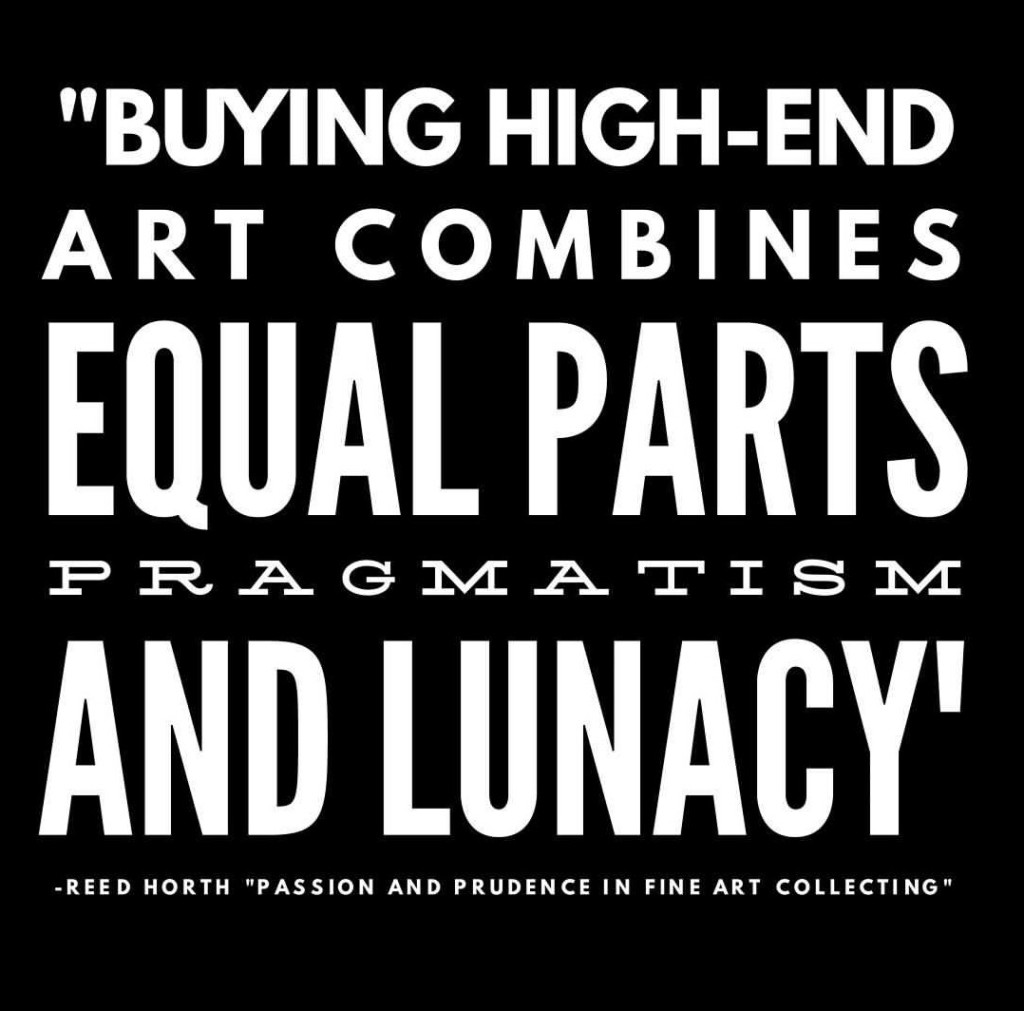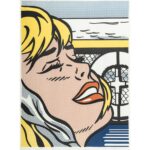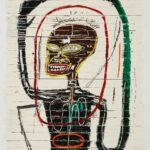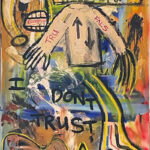The art of buying high-end art combines equal parts pragmatism and lunacy. Meaning, for someone to spend over $1M on something they ostensibly do not need, both the right and left sides of the brain must be functioning in tandem. Buyers must be pragmatic, as no one wishes to spend this type of money without some form of guarantee that what they are getting is…
- Fairly-priced
- Authentic
- Not subject to repossession by a disgruntled former owner or descendant.
- AND that there is a potential for this investment to grow.

Conversely art buyers must have passion, in all its varied forms. In the preface of “The Picture of Dorian Grey”, Oscar Wilde wrote : “The artist is the creator of beautiful things. To reveal art and conceal the artist is art’s aim… We can forgive a man for making a useful thing as long as he does not admire it. The only excuse for making a useless thing is that one admires it intensely. All art is quite useless” 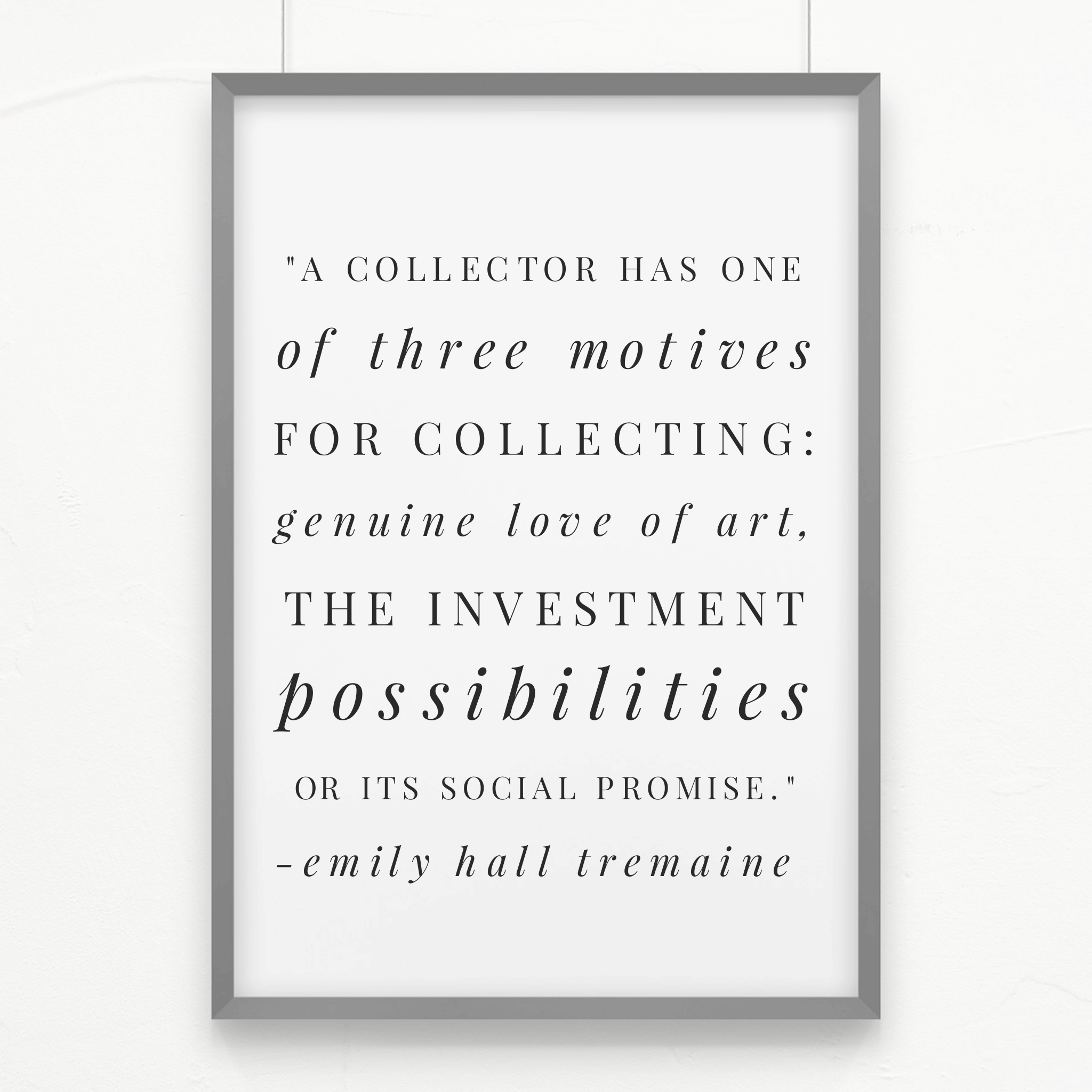

Art is unlike any other asset-class, as it is one which may or may not produce a specific and quantifiable return on investment. However, it does provide owners with a sense of pride, culture and status which are not equally conferred upon those owning any other form of asset. Furthermore, the connotation of an art owner or investor is that of someone who is “educated” whether or not this actually means formally educated or simply a student of life.
No millionaire/billionaire ever wishes to be told “no”. In the auction setting, the spectacle of bidding against another equally-moneyed cohort is part of the passion-based art purchase. Successful buyers will often bid a work up simply because they are not acclimatized to losing at anything in their everyday lives. This winner-take-all attitude also transcends in to the dynamic Art fairs, such as Frieze, The Armory, Maastricht, Art Basel and Art Basel at Miami Beach. The early access to the art is essential in beating all other comers on the best works. Collectors vie to be the first or most visible purchaser of a prominent work. The plebian public may have a pick of the rest once red-dots are placed on the best of the best.
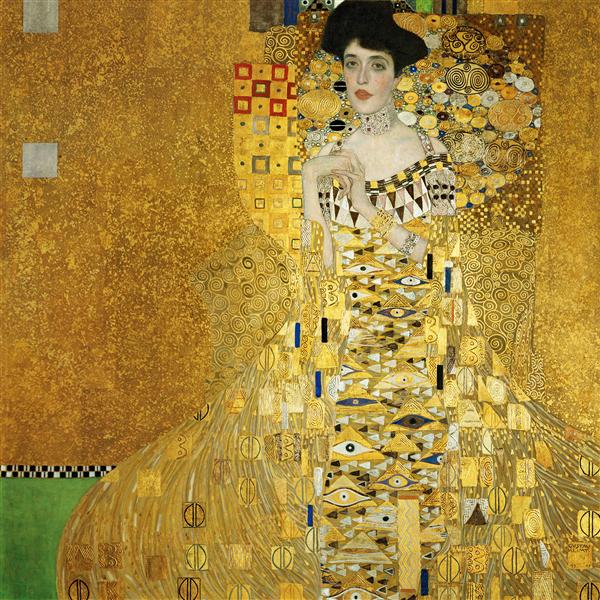 However, private art buyers tend to be less passion-based and more pragmatic in their approach. As the private market is inherently quiet by its very nature, buyers and sellers can maintain a degree or anonymity not available when the press and paparazzi are buzzing at their feet. Of the top 10 prices paid for art in the world, 5 were purchased through private sale. Theseinclude Cezanne’s “Card Players” (Sold for $259M in April 2011), Pollock’s “No. 5, 1948” (Sold for 140M in November 2006), de Kooning’s “Woman III” (Sold for $137M in November 2006) Picasso’s “La Reve” (Sold for $155M in March 2013) and Klimt’s “Portrait of Adele Bloch-Bauer” (Sold for 135M in June 2006). Although we are aware of the names of the buyers now, the art was purchased with little fanfare and no public recognition until after they were closed.
However, private art buyers tend to be less passion-based and more pragmatic in their approach. As the private market is inherently quiet by its very nature, buyers and sellers can maintain a degree or anonymity not available when the press and paparazzi are buzzing at their feet. Of the top 10 prices paid for art in the world, 5 were purchased through private sale. Theseinclude Cezanne’s “Card Players” (Sold for $259M in April 2011), Pollock’s “No. 5, 1948” (Sold for 140M in November 2006), de Kooning’s “Woman III” (Sold for $137M in November 2006) Picasso’s “La Reve” (Sold for $155M in March 2013) and Klimt’s “Portrait of Adele Bloch-Bauer” (Sold for 135M in June 2006). Although we are aware of the names of the buyers now, the art was purchased with little fanfare and no public recognition until after they were closed.Unlike Real Estate, in which a great property listing will be passed among varied brokers in order to saturate the market and discover a sale, the very best art properties are sometimes only shown to one person, the buyer. This privacy and intimacy often afford an art collector access to better, more exclusive works and/or better prices, sometimes a combination of both. Market saturation of a particular art property can potentially turn off buyers to perfectly sanguine works. Further, brokers who do saturate the market often lack experience, an understanding of market nuance and industry expertise essential to bringing a transaction to a successful close. After all, this is why they are saturating the market to begin with… Fishing for buyers.
As with everything, balance is essential. A passion-based purchase of a marquis Art property can be made with prudence and pragmatism if given to correct resources. In other words… Yes, you can reconcile “Head” and “Heart”.
“Passion and Prudence in Fine Art Collecting” by Reed V Horth
Phone: 813-340-9629 or email info@robinrile.com
